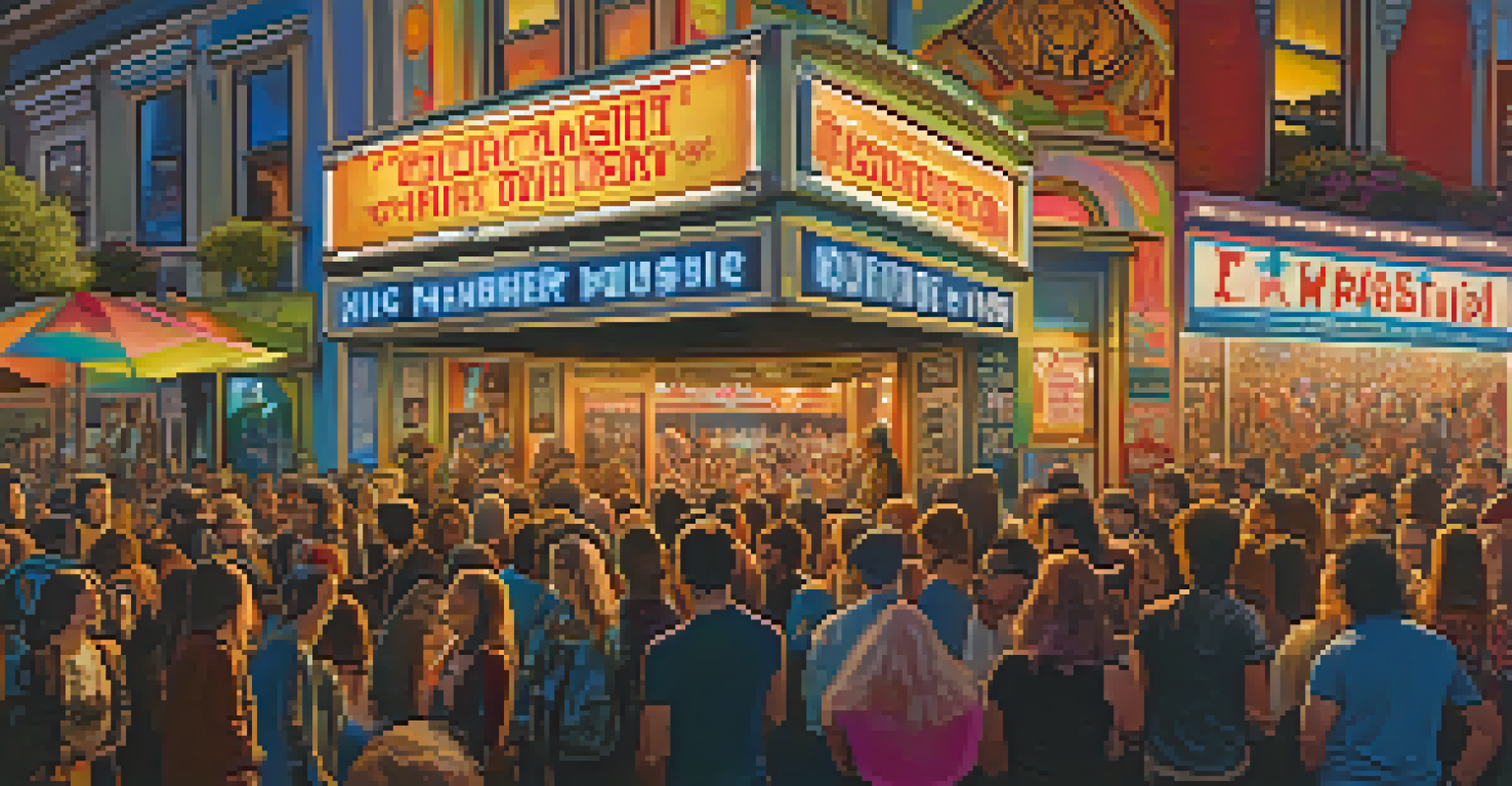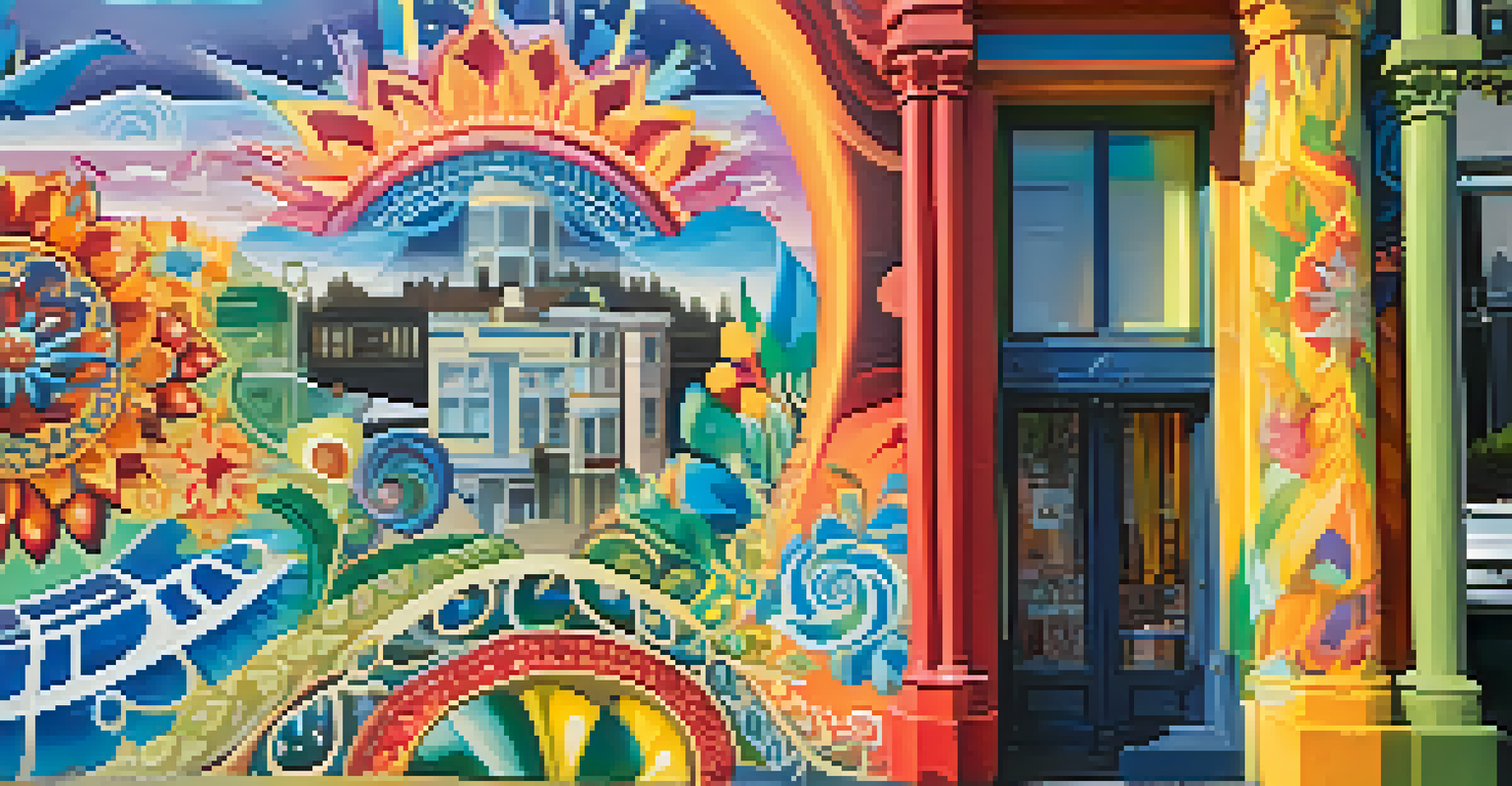Unveiling the History of San Francisco's Haight-Ashbury Area

Origins of Haight-Ashbury: A Melting Pot of Cultures
The Haight-Ashbury neighborhood's roots trace back to the late 19th century, when it was primarily a residential area. The Victorian architecture we see today reflects the diverse cultural influences that shaped its development. Immigrants and artists flocked to the area, creating a dynamic community that thrived on creativity and resilience.
You can’t separate peace from freedom because no one can be at peace unless he has his freedom.
By the early 20th century, the Haight became known for its eclectic residents, including musicians, poets, and intellectuals. This rich tapestry of cultural influences set the stage for the neighborhood's future as a hub of counterculture. The area's charm and vibrancy made it an attractive place for those seeking a different way of life.
The combination of history, architecture, and a diverse population laid the groundwork for Haight-Ashbury’s transformation into a significant cultural landmark. It was a place where new ideas could flourish, making it ripe for the revolutionary changes that were soon to come.
The Birth of the Counterculture Movement in the 1960s
The 1960s marked a turning point for Haight-Ashbury, as it became the epicenter of the counterculture movement. Young people, disillusioned by societal norms, gathered in the area to express their beliefs through art, music, and lifestyle choices. The Summer of Love in 1967 brought thousands to the neighborhood, solidifying its reputation as a hub for peace and love.

During this time, the Haight was filled with colorful murals, free concerts, and a spirit of experimentation. Legendary musicians like Janis Joplin and the Grateful Dead became synonymous with the area, and their music echoed the values of freedom and community. This vibrant atmosphere attracted tourists and locals alike, eager to participate in the unfolding cultural revolution.
Cultural Roots of Haight-Ashbury
The neighborhood's diverse cultural influences and Victorian architecture laid the groundwork for its development as a creative hub.
However, the influx of people also led to challenges such as overcrowding and heightened drug use. Despite these issues, the Haight-Ashbury spirit of togetherness and creativity endured, marking the area as a symbol of the transformative power of youth culture.
The Role of Iconic Music Venues in Haight-Ashbury
Music played a pivotal role in shaping the identity of Haight-Ashbury during the counterculture era. Venues like the Fillmore and the Avalon Ballroom hosted unforgettable performances that defined the sound of a generation. These spaces became gathering points for those seeking connection through the magic of live music.
The only way to make sense out of change is to plunge into it, move with it, and join the dance.
Artists such as Jefferson Airplane and the Grateful Dead not only performed here but also helped cultivate a community of like-minded individuals. The music scene fostered a sense of belonging, encouraging people to embrace ideals of love and peace. The melodies that filled these venues often echoed the social changes happening outside their walls.
Even today, the legacy of these music venues continues to influence the culture of Haight-Ashbury. They serve as reminders of a time when music was a powerful vehicle for change, uniting people from all walks of life in their quest for freedom and expression.
The Haight-Ashbury Today: A Blend of Past and Present
Today, Haight-Ashbury is a vibrant neighborhood that retains much of its historical charm while adapting to modern times. Visitors can stroll through its streets, lined with colorful shops, cafes, and vintage boutiques that pay homage to its past. The area still attracts artists and free spirits, ensuring that the essence of the counterculture lives on.
Despite gentrification and changes over the years, the neighborhood has managed to preserve its unique identity. Festivals and events, such as the Haight-Ashbury Street Fair, celebrate its rich history and continue to draw crowds. Local businesses often carry the torch of the original spirit, promoting art and community engagement.
Counterculture Movement of the 1960s
Haight-Ashbury became the epicenter of the counterculture movement, attracting youth who sought freedom, community, and self-expression.
However, the challenges of urban life persist, and issues such as homelessness and rising rents are ongoing concerns. The community remains committed to finding solutions while honoring the legacy of Haight-Ashbury as a place of acceptance and creativity.
Art and Expression in the Haight-Ashbury Neighborhood
Art has always been a vital part of Haight-Ashbury's identity, serving as a means of expression for its residents. The neighborhood is renowned for its vibrant murals and street art that tell stories of love, resistance, and community. This artistic heritage continues to inspire new generations of artists who seek to capture the spirit of the area.
Local galleries and art collectives play a crucial role in showcasing the work of both established and emerging artists. Events like art walks and exhibitions draw crowds eager to experience the creative pulse of Haight-Ashbury. These gatherings not only promote artistic expression but also foster connections within the community.
The ongoing dialogue between art and social issues reflects the neighborhood's commitment to activism. Many artists use their work to address topics such as environmentalism and social justice, continuing the tradition of using art as a catalyst for change.
Haight-Ashbury's Influence on Modern Culture
The legacy of Haight-Ashbury extends far beyond its borders, impacting modern culture in profound ways. The ideals of peace, love, and social justice that emerged from the counterculture movement continue to resonate today. Many contemporary movements, from environmental activism to LGBTQ+ rights, draw inspiration from the principles championed by the Haight's early residents.
Fashion trends that emerged from the neighborhood, such as tie-dye and bohemian styles, have made a comeback in recent years, influencing designers and influencers alike. This revival showcases how the spirit of Haight-Ashbury remains relevant in today's world, bridging the gap between past and present.
Modern Influence and Preservation
Despite modern changes, Haight-Ashbury's legacy continues to inspire contemporary movements and is preserved through community efforts.
Moreover, the area has become a pilgrimage site for those seeking to understand the roots of modern counterculture. Visitors from around the globe flock to Haight-Ashbury to experience its history firsthand, ensuring that its influence endures in the collective memory of society.
Preserving the Legacy of Haight-Ashbury
As Haight-Ashbury continues to evolve, efforts to preserve its rich history are vital. Local organizations and community members work tirelessly to maintain historical landmarks and educate visitors about the neighborhood's significance. Initiatives include walking tours and educational programs that highlight the area's unique cultural heritage.
The preservation of sites such as the Red Victorian Bed & Breakfast and the former home of Janis Joplin serves as a testament to the neighborhood's storied past. These locations remind us of the individuals and movements that shaped Haight-Ashbury, ensuring that their stories remain alive for future generations.

By fostering a sense of community involvement and awareness, residents are committed to keeping the spirit of Haight-Ashbury thriving. This dedication to preservation reflects the neighborhood's core values of inclusivity and creativity, ensuring that its legacy continues to inspire.